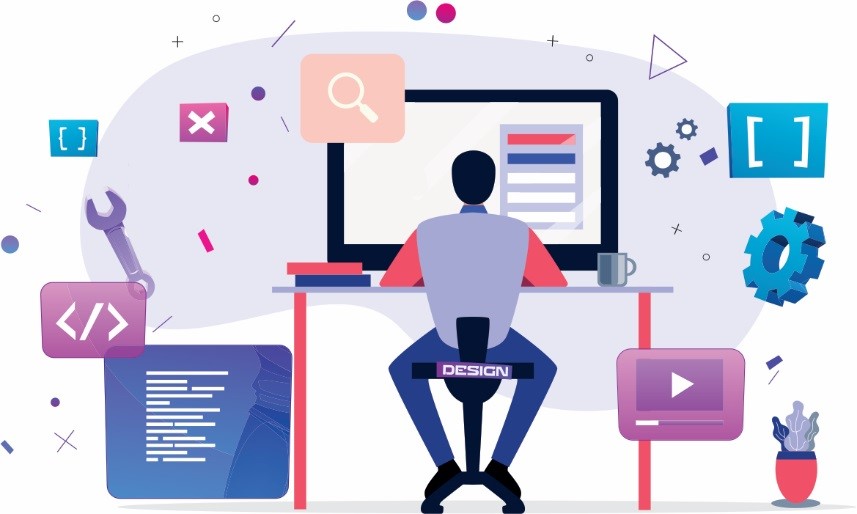Why Picking the Right Software Development Partner Can Transform Your Project
Why Picking the Right Software Development Partner Can Transform Your Project
Blog Article
Committed Developers vs. In-House Teams: Which Is Right for You?
The choice between utilizing committed developers and preserving an internal team is a considerable one that can influence the trajectory of your tasks and overall service approach. Committed developers offer a degree of versatility and specific competence that can be useful for certain, temporary initiatives. On the other hand, internal groups add to a natural business society and a nuanced understanding of lasting objectives. By taking a look at crucial aspects such as spending plan, job extent, and wanted control, you can much better determine which method lines up with your organizational requirements. The effects of this selection expand beyond immediate outcomes-- consider the more comprehensive influence on your organization landscape.
Understanding Devoted Designers
The growing need for specialized abilities in the tech market has led to the emergence of dedicated programmers as a viable remedy for lots of organizations. These professionals are generally gotten on a job basis, enabling firms to take advantage of specific knowledge without the long-term commitment linked with permanent hires. Committed designers are commonly embedded within a customer's group, supplying flexibility and scalability to fulfill project needs.
This design permits organizations to access a global ability pool, which is especially advantageous in a quickly evolving technological landscape. Devoted designers can be sourced from various geographical places, making sure that companies can find the ideal ability at affordable prices. They usually bring a wide range of experience and knowledge, having actually worked with diverse projects across different markets.
Furthermore, committed developers can focus exclusively on the tasks available, boosting performance and efficiency. They are geared up to integrate seamlessly right into existing operations, teaming up closely with internal groups to achieve job purposes. This approach not only decreases the concern of employment and training but also allows companies to remain nimble, adapting rapidly to altering market demands and technological developments.
Benefits of In-House Teams

Moreover, in-house groups often tend to have a deeper understanding of the business's mission, worths, and goals. This placement can enhance employee involvement and motivation, as staff member really feel extra connected to their job and the organization's success. Furthermore, having a committed in-house group enables better alignment of strategies and goals, as these members are regularly concentrated on the business's priorities.
In-house teams likewise assist in quicker decision-making procedures, as they can react more swiftly to changes and difficulties. The well established relationships and familiarity with business methods enable streamlined process and lowered miscommunication. Ultimately, the combination of a cohesive society, placement with business objectives, and efficient communication makes in-house teams an important possession for lots of companies, especially those aiming to cultivate lasting development and technology.
Cost Considerations
When evaluating price considerations, both dedicated developers and internal groups present distinct financial effects for companies. Engaging dedicated programmers commonly entails a pay-per-project or hourly rate model, which can be affordable for companies with varying project needs. This technique enables flexibility in scaling sources up or down, making certain that firms only spend for the solutions they need.
In contrast, internal teams entail taken care of prices, consisting of incomes, advantages, and overhead expenses such as office room and devices. While this model offers better control and immediate accessibility of resources, it might result in greater long-term expenditures, especially if the work does not justify a full-time personnel.
Additionally, companies should take into consideration the covert costs related to employment and training of internal staff members, which can even more wikipedia reference strain spending plans. In many cases, the moment and sources invested in managing an in-house group can take away from the organization's core service purposes.

Project Management and Versatility
Job administration and versatility are critical variables that affect the selection in between in-house teams and devoted developers. Committed programmers commonly provide a high degree of versatility, enabling organizations to range resources up or down based upon task needs. This agility can be particularly advantageous for organizations experiencing changing work or those seeking to introduce quickly. Dedicated teams frequently have developed processes for managing projects efficiently, leveraging certain approaches like Agile or Scrum, which facilitate repetitive progress and flexibility.

Inevitably, the option between in-house teams and devoted developers depends upon the wanted degree of adaptability and the details job management requirements. Companies must review their functional characteristics, job complexity, and source schedule to determine which alternative lines up best with their strategic purposes.
Making the Right Choice
Selecting the best advancement method-- specialized developers or in-house teams-- calls for a cautious analysis of numerous factors that align with a business's strategic goals. On the other hand, in-house teams can give better connection and combination with existing workers.
Following, review your budget plan. Committed programmers often present visit homepage an economical solution for temporary projects, while internal groups may incur higher lasting expenses because of incomes, benefits, and overhead expenses. Analyze the degree of control and cooperation desired; internal groups commonly cultivate more powerful interaction and alignment with company society.
Furthermore, take into consideration the moment framework. If immediate outcomes are required, devoted developers can be onboarded rapidly, whereas developing an in-house team requires time for employment and training. Ultimately, consider the long-lasting vision of your organization. Spending in an in-house team might generate better returns over time if continual development is crucial. Ultimately, the choice hinges on a comprehensive evaluation of these variables, making certain placement with your company's overall purposes and operational demands.
Conclusion
Finally, the decision between devoted designers and internal teams depends upon task requirements and organizational objectives. Devoted designers supply adaptability and specific proficiency, making them appropriate for short-term efforts. Alternatively, internal teams grow a cohesive culture and deeper positioning with long-lasting objectives. Careful assessment of budget plan restrictions, job timelines, and wanted control degrees is crucial for determining one of the most suitable method, guaranteeing alignment with calculated top priorities and functional effectiveness.
The decision in between utilizing committed designers and maintaining an in-house group is a considerable one that can affect the trajectory of your projects and overall business approach.Job management and versatility are essential aspects that influence the selection in between committed designers and internal teams. software development partner.In contrast, internal groups may excel in keeping a consistent job management structure due to their familiarity with the company's culture and long-lasting goals. Committed designers usually provide an affordable solution for short-term tasks, while internal groups might incur higher long-lasting costs due to salaries, benefits, and expenses prices.In final thought, the decision between specialized programmers and in-house groups pivots on job needs and business objectives
Report this page